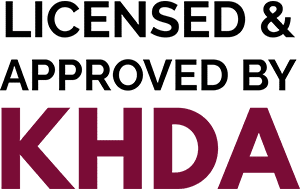
With each individual child comes a different display of strengths and weaknesses. Even one disorder might exhibit itself differently varying from person to person. The literature available is so dense that it can often mislead us from understanding what our child is actually struggling with, and that closes the opportunity of treatments and solutions. Here we are with some quick facts about speech and language disorders.
A GENERAL DEFINITION AND UNDERSTANDING OF THE DISORDER
Speech and language problems may make it hard for your child to understand and speak with others or make the sounds of speech. Kids with these disorders often have trouble when they learn to read and write, or when they try to be social and make friends. But treatment helps most children improve, especially if they start it early. For children with speech disorders, it can be tough forming the sounds that make up speech or putting sentences together.
THE THREE MAJOR TYPES OF SPEECH DISORDER:
Articulation: The pronunciation of certain words may get tough for them. They may drop sounds or use the wrong sounds and say things like “wabbit” instead of “rabbit.” Such examples can be a sign if the mistakes prevail longer than the general age.
Fluency: How your child’s words and sentences flow might be getting difficult for them. Stuttering is a fluency disorder. That’s when your child repeats words, parts of words, or uses odd pauses. It’s common as kids approach 3 years of age. That’s when a child thinks faster than they can speak. If it lasts longer than 6 months, or if your child is more than 3.5 years old, get help.
Voice: If your child speaks too loudly, too softly, or is often hoarse, they may have a voice disorder. This can happen if your child speaks loudly and with too much force. Another cause is small growths on the vocal cords called nodules or polyps. They’re also due to too much voice stress.
SIGNS TO DETECT LANGUAGE AND SPEECH DISORDERS.
- If your child uses fewer and simpler sentences than their peers.
- If they’re constantly struggling to find the right words
- If they’re not able to speak in complete sentences.
- If they don’t babble by the 7th month or so.
- Are only able to speak a few words at 17 months
- If they can’t join or put two words together for 2 years or so
- If they have trouble understanding, reading, and writing even on the basic level.
THE TWO MAJOR TYPES OF LANGUAGE DISORDER
RECEPTIVE – when they are not able to understand and process what they hear, are unable to follow directions or answer to a question or identify asked objects.
EXPRESSIVE – Children having expressive disorder often face trouble finding the right words to express themselves, ask questions, speak full sentences, or continue conversations.
THE CAUSE – It’s not always possible to trace the cause of language disorders. Physical causes of this type of disorder can include head injuries, illness, or ear infections. These are sometimes called acquired language disorders. Poor nutrition, down syndrome, autism, premature birth or family history can also be one of the causes.
A FEW THINGS THAT HELP CHILDREN COPE UP WITH THE DISORDER
- Know exactly what skills should be mastered at a certain age.
- Talk talk talk! The more you talk to your child even as a newborn or before they’re born, the easier it gets for them to acquire language.
- Point to objects and name them even if you have to repeat them.
- Ask them questions when you feel your child is ready
- Respond to what they say, and refrain from over-correcting them.
- Offer them their comfortable ‘wait time’ they might require an understanding of what they heard before starting to explain it.
- Looking at or reading books.
- Telling stories.
- Singing songs and sharing rhymes.
TREATMENTS AND SOLUTIONS FOR THE DISORDER
Children with language problems often need extra help and special instruction. Early intervention with special education services and language pathologists can work wonders with such children. Brain Training goes hand in hand with the disorders too.
Our program at Brainnovation envisions boosting the confidence of these children and training them in an educational yet informal environment where they can pick on the natural cues of language. This program influences and further aids their ongoing Speech and Language Therapy in Dubai. Keep in mind that these children deserve the resources that are out there for them, and the earlier they start, the better the results.






